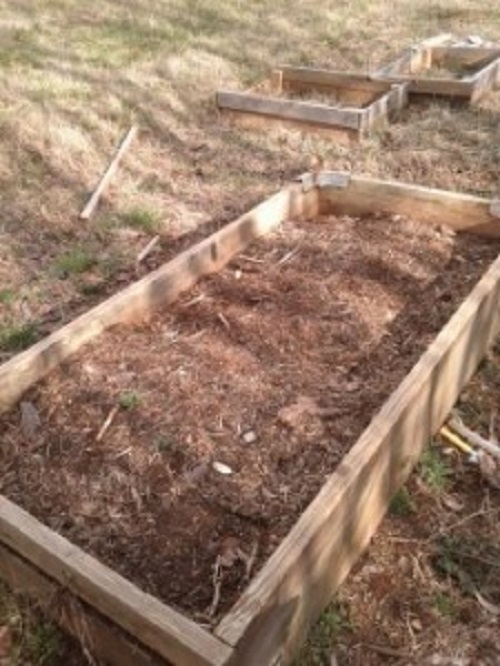Tips for Protecting Plants From Late Freeze

It's not nice to be fooled by Mother Nature.
Helping Plants Survive Cold Spells After Blooming
It's is the time of year when those who love to grow plants are anxious to get started. The quicker that tomato seedling gets in the ground, the sooner we are rewarded with a ripe, juicy red tomato.
An unseasonably warm spell can cause buds to swell open and green shoots to pop up from the ground. Then suddenly a cold snap, or Blackberry Winter, as old-timers say, blows in to delay our spring dreams. Fortunately, there are steps to take when Mother Nature fools us with warm temperatures too soon. There are even steps to take when her trickery appears to have gotten the best of us.
Blackberry winter or dogwood winter is a name coined in old Appalachia that refers to a traditional late winter “cold spell”

Can Plants Survive Cold Spells After Blooming?
Mid-February to mid-April can be tricky times for gardeners. Is is too soon to plant? How can we protect our plants from Mother Nature’s tricky weather? What to do if we mess up?
The weather in many growing zones is a roller coaster ride from mid-February to mid-April. This can be unfortunate for those who love gardening.
How Can Late Season Free Damage Plants?
Plants turn soil, air, light, and water into necessary nutrients. This process takes place in the leaf of the plant. Frost and ice freeze the water in plant cells, causing damage to the plant at the cellular level. Cell walls in the leaves will become dehydrated and render the plant unable to produce nutrients.
The amount of damage depends upon the following factors: length and warmth of the unseasonable warm spell, severity and duration of the cold snap, and the hardiness of the plant. The more warm days that occur during the period the more plants will begin to bud and bloom. A very short not-so-severe cold snap after a short warm-up is not likely to hurt hardier plants. But a longer, more severe cold snap after a longer warm-up will most definitely hurt less hardy plants. It’s a game of weights and ratios and the gardener has to pay attention to many factors to beat Mother Nature’s dirty tricks.
Where to Protect Plants From Late Freeze
First and foremost, the gardener will need to be aware of the hardiness zone they are planting in. Zone maps show where certain plants can adapt and thrive permanently. The zones can be found on the internet, in gardening books, and on seed packages. Each zone moves 10 degrees warmer or colder. There are 11 zones in North America ranging from a low temperature of a possible -50 degrees below zero in zone one to rarely dipping below 40 degrees above zero in zone 11. In Europe, the zones are numbered 3 to 10 and range from Finland to southern Spain, Italy, and Greece. Possible lows range from -40 below zero to rarely dipping below 30 degrees above. All temperatures listed are Fahrenheit.
If you are unsure of your own hardiness zone, type in your zip code to find out. Use the zone map as a general guideline and take into consideration variations for higher elevations as these areas tend to experience colder temperatures. Some meteorologists have recently suggested that these zones are shifting with the warming of the planet, and you may be able to safely move your planting into one zone warmer.

An Ounce of Prevention
The savvy gardener prepares for Mother Nature’s fickleness in the fall and begins with mulching. Suggestions for mulching materials include dead leaves, pine straw, hay, and wood shavings. Mulch will act as a blanket for sensitive plants.
Mulching Tips For Winterizing Plants
In the fall, pull out old mulch to replace with new mulch. For rose bushes, add mulch mixed with soil for 12 inches of the trunk from the ground to the crown. For young fruit trees or other tender new trees, create a cage of chicken wire around the tree and fill this with mulch. When mulching, leave some space around stems to help prevent root rot. Some tender plants can’t handle a lot of mulch. Be careful not to smother them. Remember, plants need air!

Plan Ahead For The Most Delicate Plants
Resist the urge to plant too soon. if you have to begin seedlings over those veggies will be even later. Keep plants that you are attempting to grow that are not native to your zone in large containers that can be relocated to a warmer basement or indoors. rosemary, pomegranate, avocado, poinsettias, and citrus trees are popular choices for gardeners but are plants native to warmer climates.
Remember that bulbs planted in pots are more likely to freeze than those planted in the ground. they won’t have the insulation provided by the ground or by an early snowfall. Consider planting spring-flowering bulbs later (daffodils, hyacinths, tulips) so that they sprout later and miss early freeze.
Have materials on hand for building a cold frame. a simple one can be constructed using cinder blocks or bales of hay for the sides and an old glass window or door for the top. Construct raised beds for your early spring planting of tender plants. They are more easily covered and cold air will tend to sink around the bottoms.








